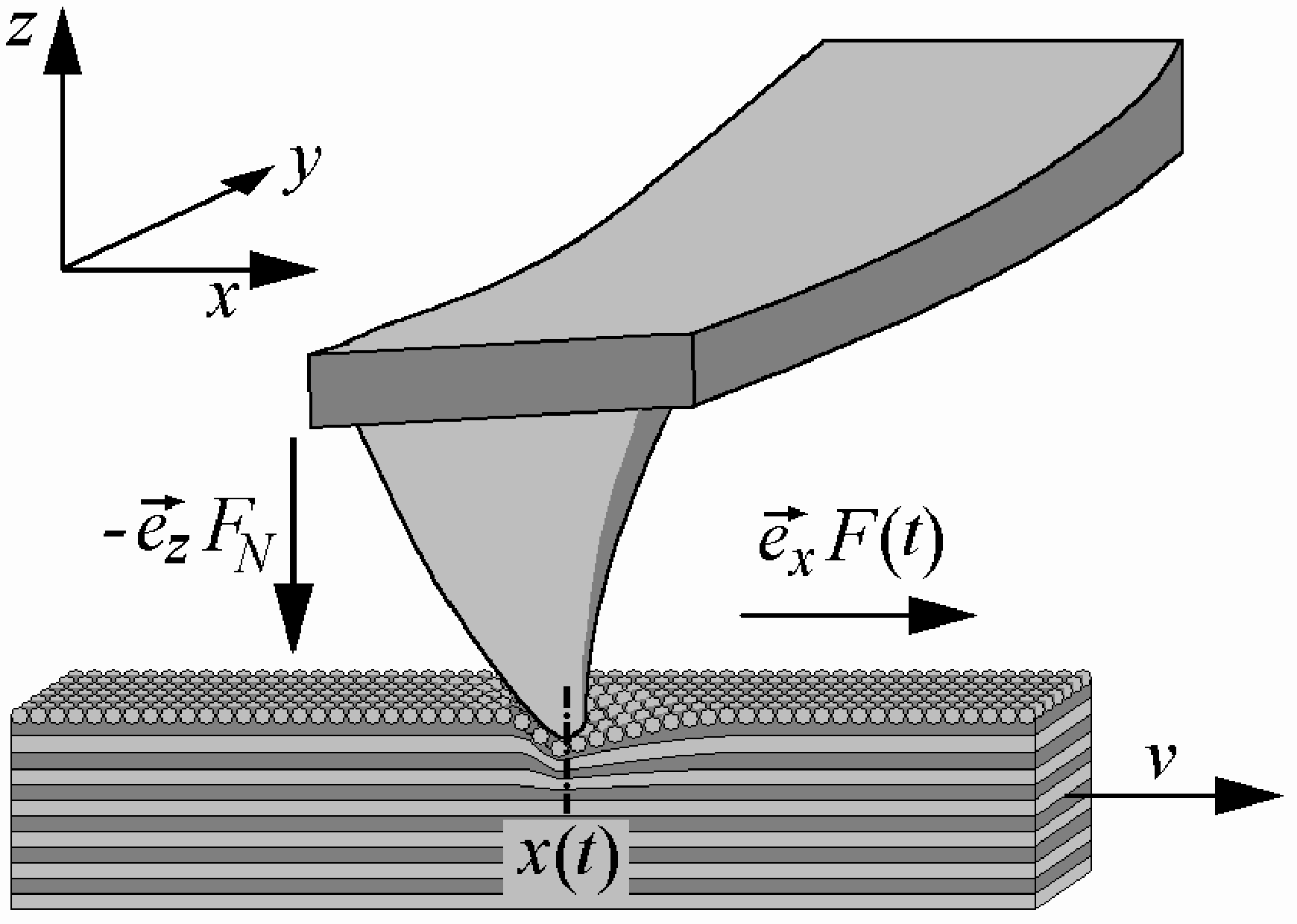
| Participating group members: | Mykhaylo Evstigneev, Peter Reimann |
| Main cooperation partners: | Andre Schirmeisen, Lars Jansen, Harald Fuchs (Physikalisches Institut and CeNTech Münster) |

Our first main objective is to refine and extend existing theories by way of a more realistic modeling of the dissipation and inertia effects. The main prediction of our new model is a non-monotonic dependence of the friction force upon the sliding velocity of the AFM-tip relative to an atomically flat surface. The region around the force maximum can be approximately described by a universal scaling law and should be observable under experimentally realistic conditions.
A second issue of our research is to develop an analytical approximation of the friction force as a function of the pulling speed that is valid in a very wide range of cantilever elasticities by means of a rate theoretical approach.
Our third main objective is a quantitative comparison between theory
and experimental observations.
Publications:
P. Reimann and M. Evstigneev
Non-monotonic velocity dependence of atomic friction
Phys. Rev. Lett., 93, 230802 (2004)
M. Evstigneev and P. Reimann
Rate Description in Friction Force Microscopy
Europhys. Lett. 67, 907 (2004)
P. Reimann and M. Evstigneev
Description of Atomic Friction as Forced Brownian Motion
New J. Phys. 7, 25 (2005)
M. Evstigneev and P. Reimann
Rate Description of the Stick-Slip Motion in Friction Force
Microscopy Experiments
Phys. Rev. E 71, 056119 (2005)
M. Evstigneev, A. Schirmeisen, L. Jansen, H. Fuchs, and P. Reimann
Force Dependence of Transition Rates in Atomic Friction
Phys. Rev. Lett. 97, 240601 (2006)
M. Evstigneev and P. Reimann
A refined force-velocity relation in friction force spectroscopy experiments
Phys. Rev. B 73, 113401 (2006)
M. Evstigneev and P. Reimann
Velocity dependence of atomic friction: Rate theory and beyond
p. 117-142 in
``Fundamentals of Friction and Wear'', edited by E. Gnecco and E. Meyer,
Springer (Berlin) 2007
M. Evstigneev, A. Schirmeisen, L. Jansen, H. Fuchs, and P. Reimann
Contact ageing in atomic friction
J. Phys.: Condens. Matter 20, 354001 (2008)
M. Evstigneev, S. von Gehlen, and P. Reimann
Interaction-controlled Brownian motion in a tilted periodic potential
Phys. Rev. E 79, 011116 (2009)
M. Evstigneev and P. Reimann
Langevin equation for a system nonlinearly coupled to a heat bath
Phys. Rev. B 82, 224303 (2010)
M. Evstigneev and P. Reimann
Rolling and sliding of a nanorod between two planes: Tribological regimes and control of friction
Phys. Rev. B 85, 035447 (2012)
Related projects:
Dynamic force spectroscopy on single biomolecules
Decay of complex metastable states
Last modified on 2012-03-14